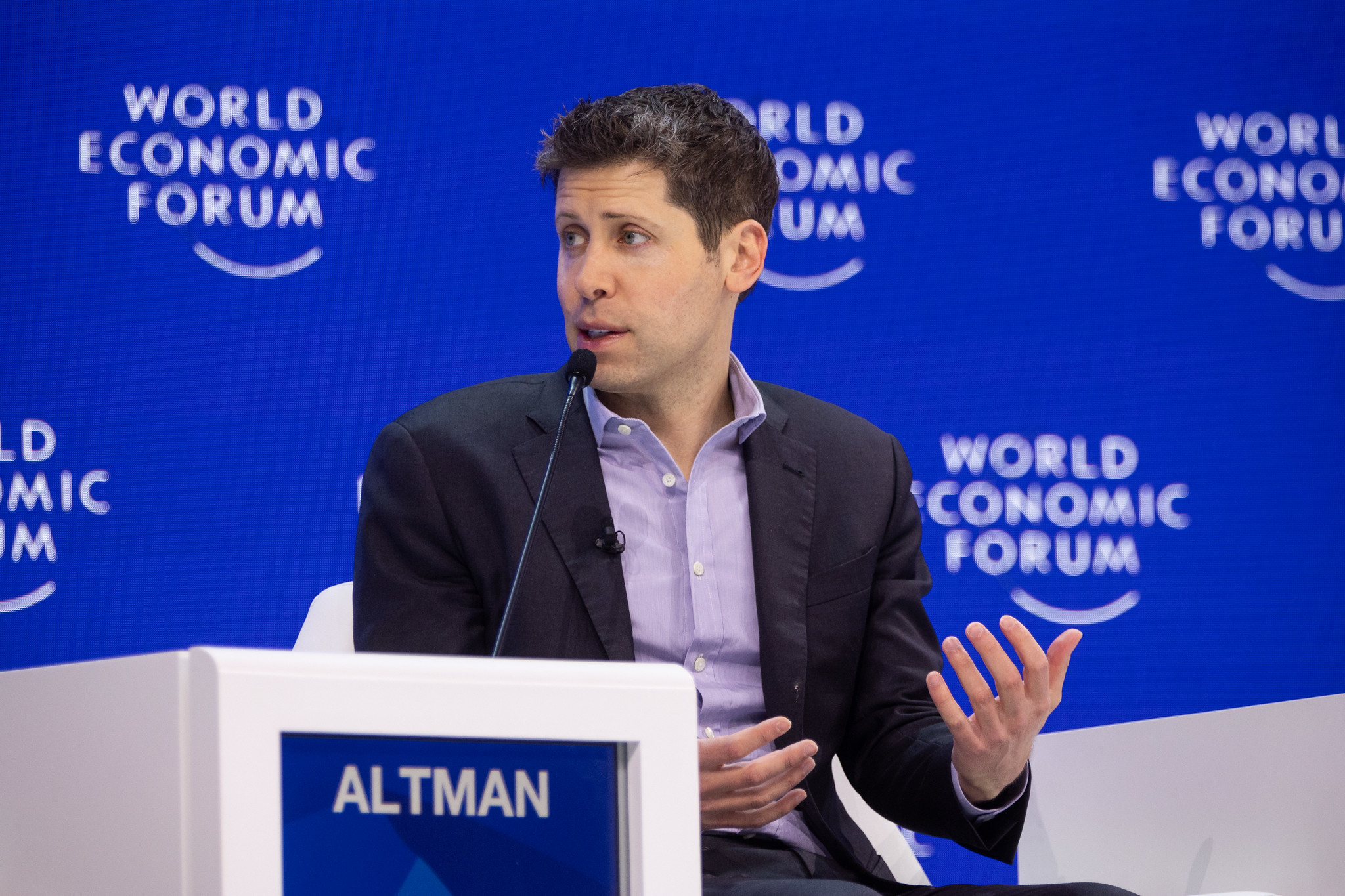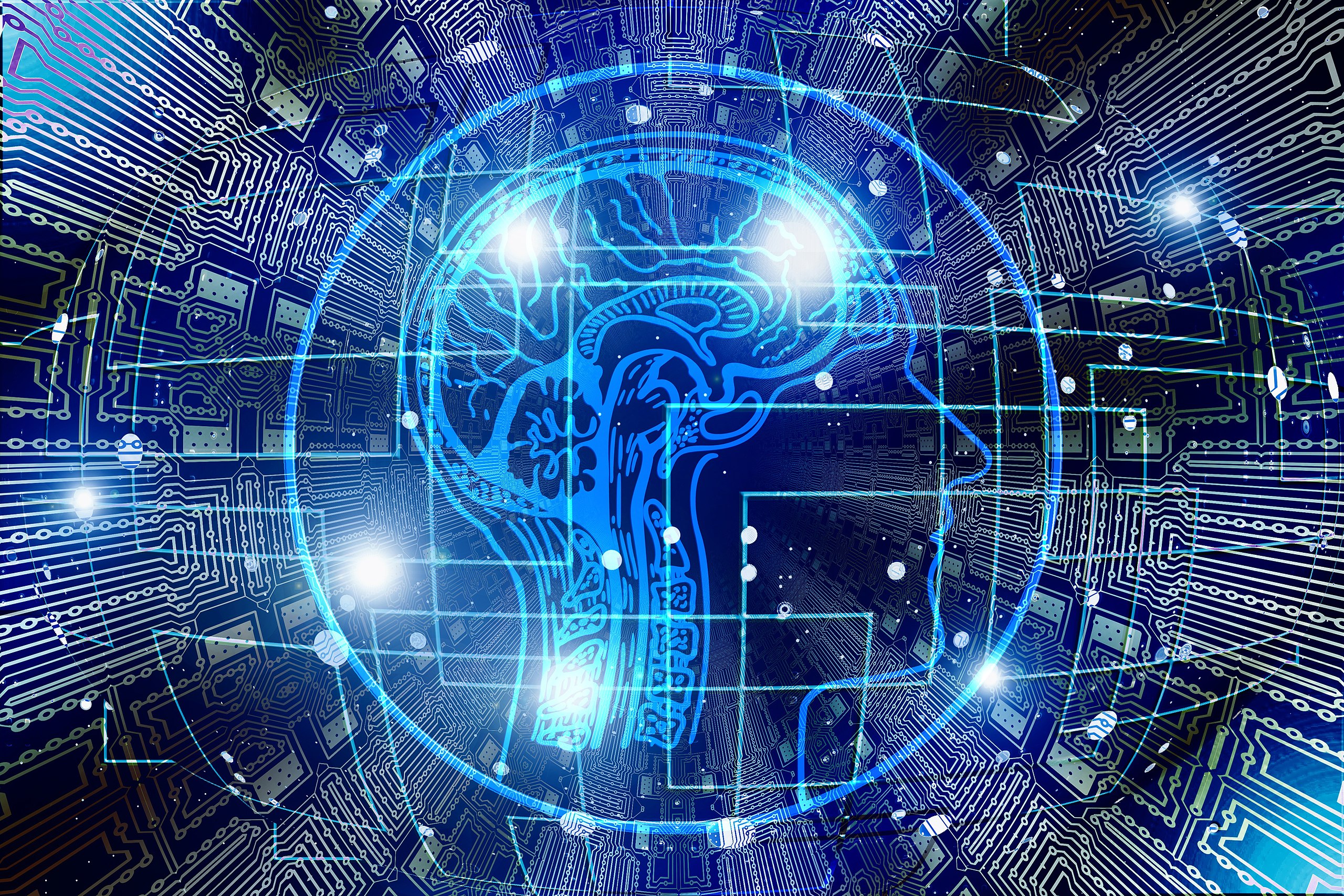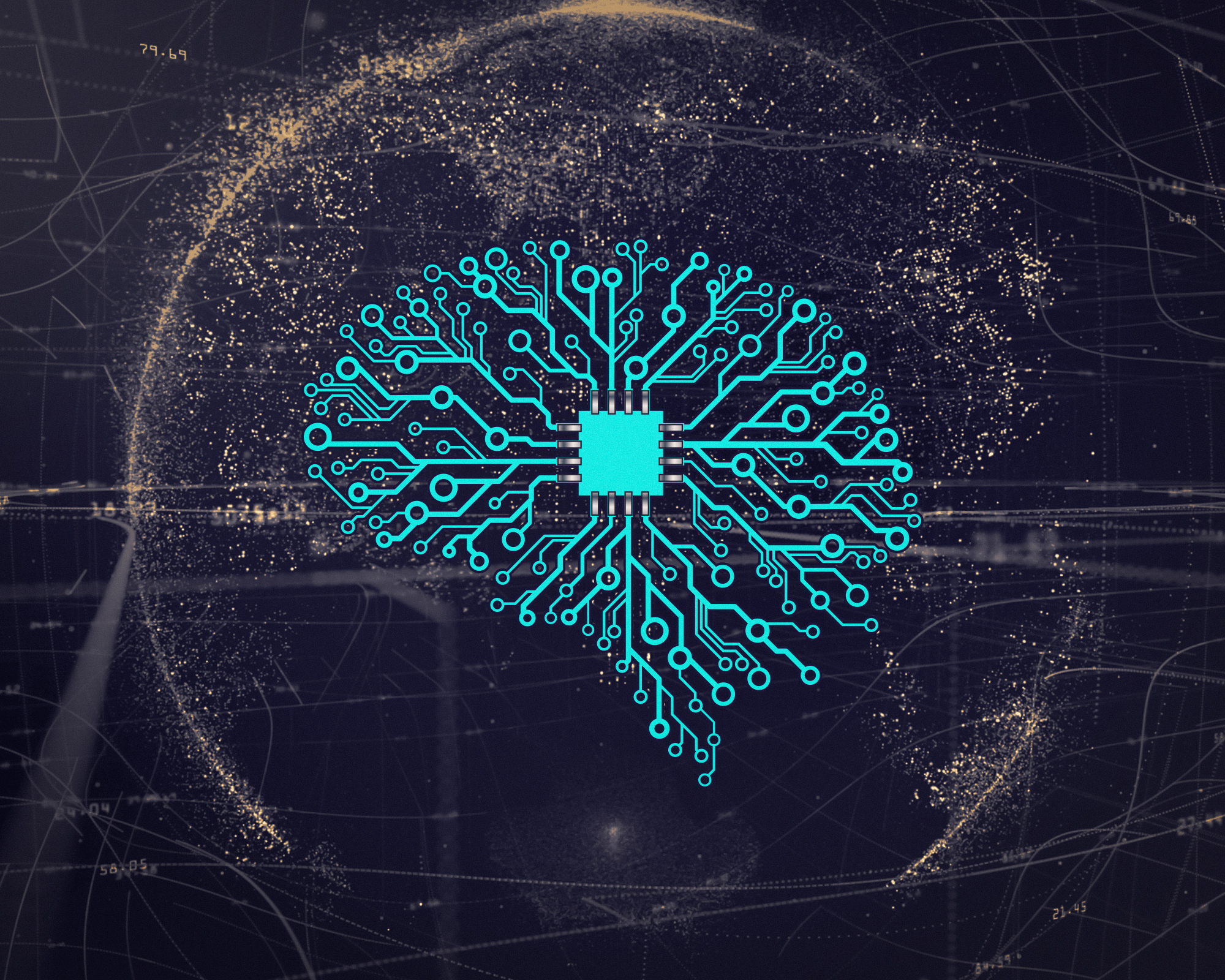The capitalists are ploughing billions into artificial intelligence, salivating at the prospect of an AI-generated economic boost and keen to grab a slice of the new gold rush. But there is no technological solution for capitalism’s fundamental contradictions, and the investment party will inevitably be followed by a hangover.
Unlike recent tech fads around NFTs and cryptocurrencies (which are essentially worthless for anything besides speculation), there is no doubting the power of AI, which is used for many applications, from facial recognition; to fraud prevention; to organising supply chains. There are far more impressive possible applications for AI in the future, given enough time and research.
However, the anarchy of the market impedes new technologies from reaching their full potential. Moreover, capitalism is in deep crisis: the conditions do not exist for a boom, and AI cannot create them. The prevailing tendency of instability means that rather than fulfilling utopian dreams of growth and prosperity, AI will tend to enrich a tiny handful, exacerbate overproduction, and worsen the living standards of the majority.
The latest craze
With the economy still languishing, the ruling class is latching onto any hope of salvation. The impressive advancements of generative AI, particularly large language models (LLMs) like ChatGPT, are seen by some strategists of capital as the answer to their prayers.
Multinational strategy and management consultant McKinsey and Co. estimated AI could add $4.4tn to world GDP annually: more than the UK’s GDP in 2023. Meanwhile, Goldman Sachs predicts AI could drive 7 percent growth in world GDP (almost $7tn) and lift productivity growth by 1.5 percentage points over 10 years. Given AI is still in its infancy, it’s unclear how they’ve come up with such impressive figures.
Nevertheless, AI has been hyped relentlessly in recent months, with Microsoft CEO Sundar Pichai last year describing it as on par with the discovery of fire! Given Microsoft is the biggest investor in OpenAI (the company behind ChatGPT), it’s perhaps unsurprising that Pichai is posing as a modern Prometheus.
 This year’s World Economic Forum was gripped by ‘AI fever’ / Image: World Economic Forum, Flickr
This year’s World Economic Forum was gripped by ‘AI fever’ / Image: World Economic Forum, Flickr
States are also taking a keen interest in AI, with the US battling China to maintain market supremacy; and the UK Tory government attempting to lure the big generative platforms with looser regulation than their European competitors.
Additionally, this year’s World Economic Forum was gripped by ‘AI fever’. OpenAI CEO Sam Altman took the conference stage, and big tech firms dominated the Davos promenade, hosting seminars with such modest titles as ‘AI: The Ultimate Invention’.
All this attention has culminated in a glut of investment, with AI and AI-adjacent companies now making up 60 percent of new unicorns (companies valued at over $1bn). In 2023, AI-related startups raised $50bn, while OpenAI abandoned its open-source pretensions, accepted a $10bn cash injection from Microsoft and opened a for-profit division.
AI company stocks are buoyant, with OpenAI seeking a valuation of $100bn (up from its present $86bn, which was already triple its worth in April 2023) and hundreds of smaller operations, awash with venture capital, also seeing their valuations spike. The AI market as a whole is valued at over $300bn (not counting essential chipmakers like Nvidia). At first glance, it seems there is no end to the AI bonanza.
Limits of the market
However, AI is already running into the limits of the market. Despite the buzz, none of the aforementioned AI companies is profitable. In fact, the immense cost of building and running AI models means companies like OpenAI are losing huge sums, and they expect to lose even more as they invest in more sophisticated models to keep ahead of the competition.
Major investors in AI such as Microsoft, Google, and Apple are banking on innovations in microchips to get around this. This has especially benefited US chipmaker Nvidia, which has a functional monopoly on processor components necessary for AI. The company saw its stock price soar by 207 percent last year and is now Wall Street’s third-most valuable company by market capitalisation.
And how are the capitalists utilising this groundbreaking (and expensive) new technology? The most common use of AI by businesses (according to Forbes) is replacing human customer service employees with chatbots (which have existed for years), followed by generating spam emails. It’s hard to see how this justifies the sky-high valuations of AI stock, especially combined with the associated expense of running LLMs. To paraphrase one frustrated executive, the situation is like using a Ferrari to deliver a pizza.
 Where there is quick money to be made and plenty of gullible investors, there are plenty of swindlers producing nothing of value / Image: own work
Where there is quick money to be made and plenty of gullible investors, there are plenty of swindlers producing nothing of value / Image: own work
For now at least, AI seems unable to shake the quirks and hallucinations that make it too unreliable for truly game-changing applications, like fully autonomous cars for instance. Even in areas where AI is advancing quickly, like coding and translation, it remains error-prone and requires human supervision, disappointing investors won over by promises of superhuman ‘Artificial General Intelligence’ (AGI). As this article was going to press, ChatGPT was going haywire, speaking in ‘Spanglish’ (broken English mixed with Spanish) and threatening users.
And, just as in every speculative bubble, where there is quick money to be made and plenty of gullible investors, there are plenty of swindlers producing nothing of value.
With capitalism wracked by overproduction, there are limited opportunities to profitably invest in the real economy, so the capitalists are prone to gambling on short-term fads to enrich themselves. The tech industry was a hotbed of speculation during the pandemic, with the cryptocurrency market alone ballooning six-fold to $3tn in 2021, powered by cheap credit and stimulus money, both of which are drying up as governments try to rein in inflation and state debt. With the crypto/NFT craze dead and buried, the tech profiteers (having learned nothing) are hunting for a new bandwagon to jump on. CNBC even reported, without a hint of irony, that AI was “pushing crypto aside as the new cool kid on the block” at Davos.
A 2019 investigation into 2,830 startups in Europe, classified as AI companies, found that 40 percent of them weren't “using AI in a material way”, but simply as a buzzword to secure funding. Others are so-called ‘thin wrapper’ startups that simply slap a new interface on existing platforms like ChatGPT: putting old wine in new bottles. All these companies and their investors will all be exposed when the tide recedes.
A lack of reliability and higher running costs have contributed to the collapse of early AI success stories. For instance, Olive AI raised $1.5bn between 2020 and 2023 with a platform designed to manage and analyse patient records in the private health sector. But it has proved over-expensive and under-reliable, resulting in big losses. As Silicon Valley giants corner the market, smaller startups have begun to wither on the vine: taking billions of their investors’ dollars with them. This is a harbinger of things to come.
Then there is the growing threat posed by government regulation and legal action. The EU has passed the world’s first ‘AI regulation act’, banning some ‘high-risk’ applications and putting limits on others, which will spook investors if other governments follow suit. At the same time, a landmark plagiarism case is currently underway, with The New York Times demanding billions in damages from OpenAI for training its ChatGPT model on “millions” of NYT articles, which it can now regurgitate in barely altered form. While a deal is more likely than legal precedent, cutting off ChatGPT’s free access to training data would hobble the chatbot, and rock the entire AI landscape.
Echoes of Dot-Com
AI is here to stay, but one way or another, a painful correction is in store. The strategists of capital have drawn a comparison with the Dot-Com bubble in the early 2000s. As Business Insider writes:
“The stock market has been partying since it bottomed in October last year – and it's predominantly been tech stock shimmying up and leading the way. This has happened before: markets rode a wave of internet hype in the late 1990s only to come crashing down when the bubble popped.”
When that occurred, hundreds of firms collapsed, and $5tn went up in smoke. The companies that survived, like Google and Amazon, hoovered up the competition and ended up in dominant positions. Recently, JPMorgan also rang alarm bells about an AI bubble, calling the current situation “eerily similar” to the early 2000s.
“While we would be hesitant to refer to the current levels of the Top 10 as a bubble,” they conclude, “it would certainly appear that the Top 10 in the Dotcom era was backed by superior earnings developments”. In plain English, this means the 10 biggest companies on the stock exchange are more overvalued, and offering lower returns to their investors, than their counterparts 24 years ago.
Bubbles are not limited to speculative scrambles over inherently worthless commodities like NFTs. They are part and parcel of the anarchic nature of capitalist production. There is always an uncontrolled rush of investment into every promising new market, accompanied by a froth of fictitious capital floating above the waves of the real economy. Stocks, securities and derivatives change hands as speculators try to make a big return, hoping that they will not be the ‘greater fool’ left holding these assets when the market becomes saturated, capital is withdrawn, and the bubble bursts.
A few capitalists (either through luck, genuinely offering useful products, or some measure of the two) leave with big profits, while the majority crash on the rocks. We saw the same, not only with the Dot-Com bubble but also with the railway mania of the 1840s. As Marx described in Volume 3 of Capital, overinvestment massively inflated the value of railway shares, wiping out dozens of small companies (many of which had never laid a single piece of track) when the share prices collapsed, leaving a few dominant firms when the dust settled.
There will certainly be winners on the back of AI. Most likely, these will be the existing big tech firms, who benefit from the capital, expertise and resources to build and manage the complex and costly technology behind AI. The so-called ‘magnificent seven’ (Meta, Microsoft, Nvidia, Apple, Alphabet, Amazon, and Tesla) are already reaching the point of absolute dominance in AI, muscling out or absorbing smaller competitors, and accounting for about half of the gains in the entire S&P 500 in February.
The overall result of the AI gold rush, as with other bubbles, will be the further concentration of capital and the greater domination of the big monopolies over the economy and our lives.
However, there is a big difference with the 2000s, which was a period of relative boom. Capitalism today is in a state of organic crisis, and the world economy is on the brink of recession – a bursting AI bubble could nudge it into the abyss. A small handful of capitalists might make it out in a strong position, but the result for the system as a whole will be further chaos and instability.
Productivity puzzle
Still, a section of the ruling class is hopeful that AI will help avert recession by boosting productivity, thus stimulating growth. We note that in the 2000s, the capitalists bragged of a “new paradigm” in which digital companies would result in “breakneck” economic growth and “full employment” for the first time since the Second World War. Neither came to pass.
And we have long been promised that automation would create a productivity boom. Yet since 2012, despite all the investment into automation, growth in output per hour globally has averaged just 0.3 percent a year, compared to 2.3 percent in the previous decade. This productivity paradox calls into question the whole historical justification for capitalism.
This contradiction can be explained by the way technology is utilised within the straightjacket of the profits system. Machines do not create value: only human labour does. Capitalists invest in machinery to put more productive power at the elbow of their workers, allowing fewer to be employed more productively, at lower-skilled tasks, flooding markets further.
 The most immediate impact of AI, as with automation, is likely to be the ‘deskilling’ of previously privileged layers / Image: public domain
The most immediate impact of AI, as with automation, is likely to be the ‘deskilling’ of previously privileged layers / Image: public domain
But in so doing, the capitalists destroy the same markets by cutting into the spending power of the working class. Goldman Sachs has claimed that AI could cause the “loss or degradation of 300 million jobs” in short order.
By exacerbating overproduction, the capitalists saw away at the branch they are sitting on, meaning profits level out, and the investment itself then dries up. In some cases, it is more profitable to go backwards – replacing expensive machines with cheap, hyper-exploited labour. For instance, the number of automated car washes in the UK fell from 9,000 20 years ago to 4,200 today because it is cheaper to pay migrants below minimum wage to hand wash cars. Herein we see the results of capitalist ‘innovation’!
The main point is that, since 2008, the whole trajectory of capitalism has been in decline. New technologies cannot avert this course, and will instead tend to exacerbate the system’s underlying contradictions. Given the current state of overcapacity on the world market (i.e., a crisis of overproduction), even real investment in AI to boost productivity (as opposed to sheer speculation) will simply aggravate this crisis.
There is another side to the matter. The system cannot productively employ the millions of workers threatened by this new technology. Sensing this danger, IMF Managing Director Kristalina Georgieva urged politicians to address the "troubling trend" to "prevent the technology from further stoking social tensions".
While the capitalists are right that almighty class struggle is on the agenda, AI will probably be a secondary, exacerbating factor. So far, a relatively thin layer of the white-collar workforce has been displaced by AI, with further job losses likely to occur over a longer period.
The most immediate impact of AI, as with automation, is likely to be the ‘deskilling’ of previously privileged layers of the proletariat and the middle classes. This was a factor in last year’s Hollywood strike, for instance. OpenAI has just started advertising its new platform, Sora, which it claims can generate photorealistic videos from text prompts. Artists, actors, coders, translators and the like are faced with the prospect of seeing years of training amount to mind-numbing ‘supervision’ of generative AIs.
Instead of freeing the workers, marvellous tools such as AI in the hands of the capitalists threaten to increase drudgery. Not only that, they are being used to increasingly surveil and control workers. In some workplaces, (including Amazon warehouses) hiring and firing are already handled by unfeeling machines – more will follow. Moreover, culture is being drowned in a baffling slurry of AI-generated text and imagery. The state arms itself with AI-powered facial and voice recognition to more effectively repress us.
Machine learning and AI are indeed mighty tools. But instead of improving our existence, this technology is used to enrich a tiny handful, while debasing everyday life for billions of people, and helping to propel the system into paroxysms of speculation and slump. It needn’t be so. The productive forces are rebelling against a system that cannot utilise them rationally.
Under communism, AI could be seamlessly integrated into a planned economy to eliminate dull, dangerous tasks. Released from the constraints of private property, it truly could increase productivity to untold levels, with no detriment to the wages and conditions of the working class. A socialist society, unencumbered by the need to appease shareholders, could take a long view towards developing AI’s real potential, as a worthy investment for humanity’s betterment, rather than limiting this remarkable technology to powering robot customer care advisors and spitting out low-quality marketing copy.
AI and automation might one day free humanity from work as we know it. But none of this is possible under the current system. Only once this technology has been liberated from capitalism, and placed at the disposal of all of society can this be accomplished.

